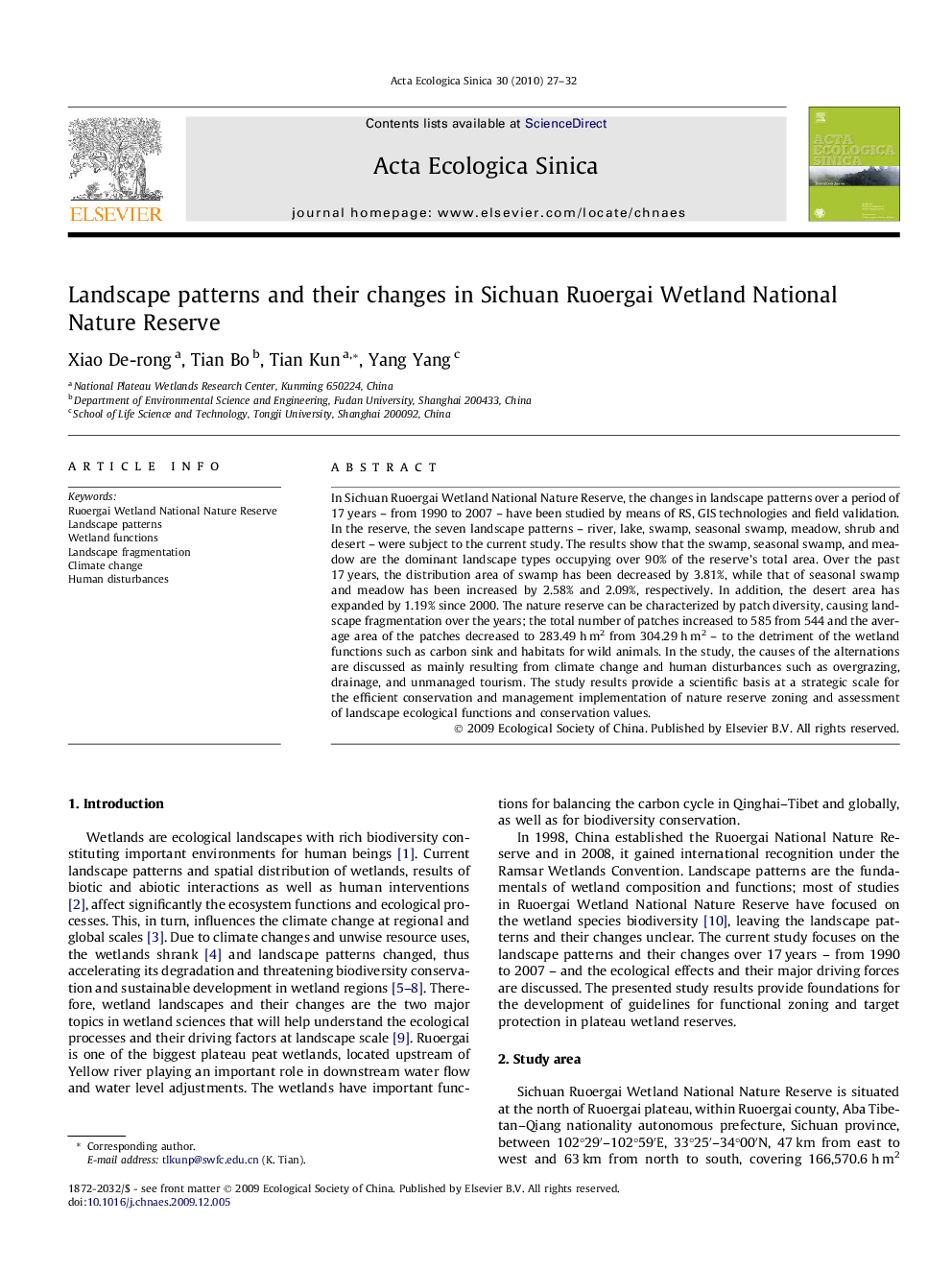| Article ID | Journal | Published Year | Pages | File Type |
|---|---|---|---|---|
| 4380303 | Acta Ecologica Sinica | 2010 | 6 Pages |
In Sichuan Ruoergai Wetland National Nature Reserve, the changes in landscape patterns over a period of 17 years – from 1990 to 2007 – have been studied by means of RS, GIS technologies and field validation. In the reserve, the seven landscape patterns – river, lake, swamp, seasonal swamp, meadow, shrub and desert – were subject to the current study. The results show that the swamp, seasonal swamp, and meadow are the dominant landscape types occupying over 90% of the reserve’s total area. Over the past 17 years, the distribution area of swamp has been decreased by 3.81%, while that of seasonal swamp and meadow has been increased by 2.58% and 2.09%, respectively. In addition, the desert area has expanded by 1.19% since 2000. The nature reserve can be characterized by patch diversity, causing landscape fragmentation over the years; the total number of patches increased to 585 from 544 and the average area of the patches decreased to 283.49 h m2 from 304.29 h m2 – to the detriment of the wetland functions such as carbon sink and habitats for wild animals. In the study, the causes of the alternations are discussed as mainly resulting from climate change and human disturbances such as overgrazing, drainage, and unmanaged tourism. The study results provide a scientific basis at a strategic scale for the efficient conservation and management implementation of nature reserve zoning and assessment of landscape ecological functions and conservation values.
